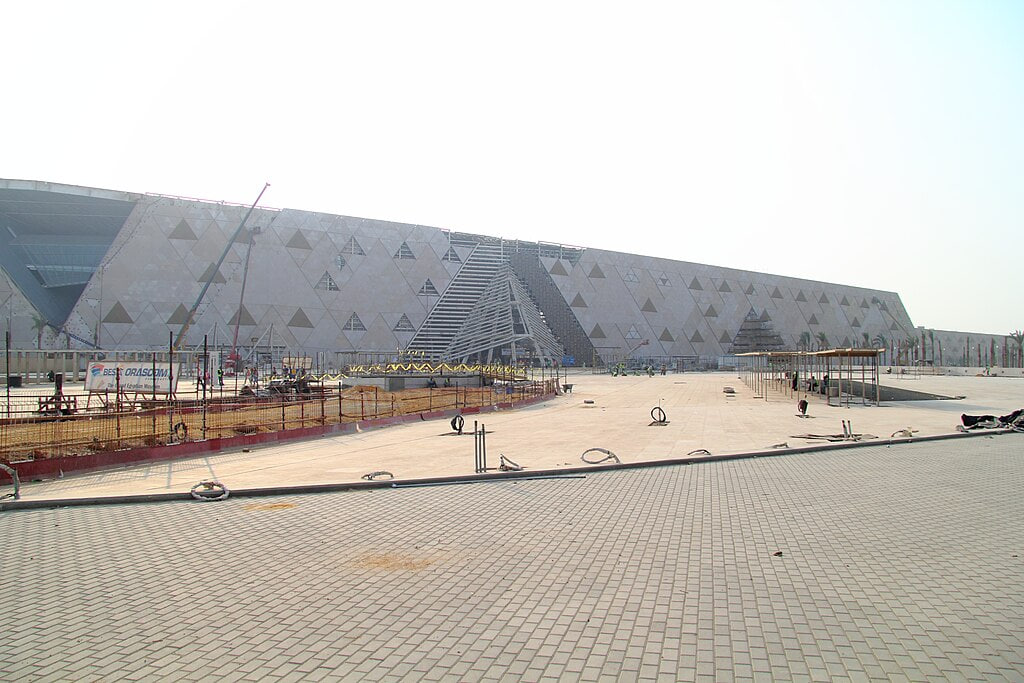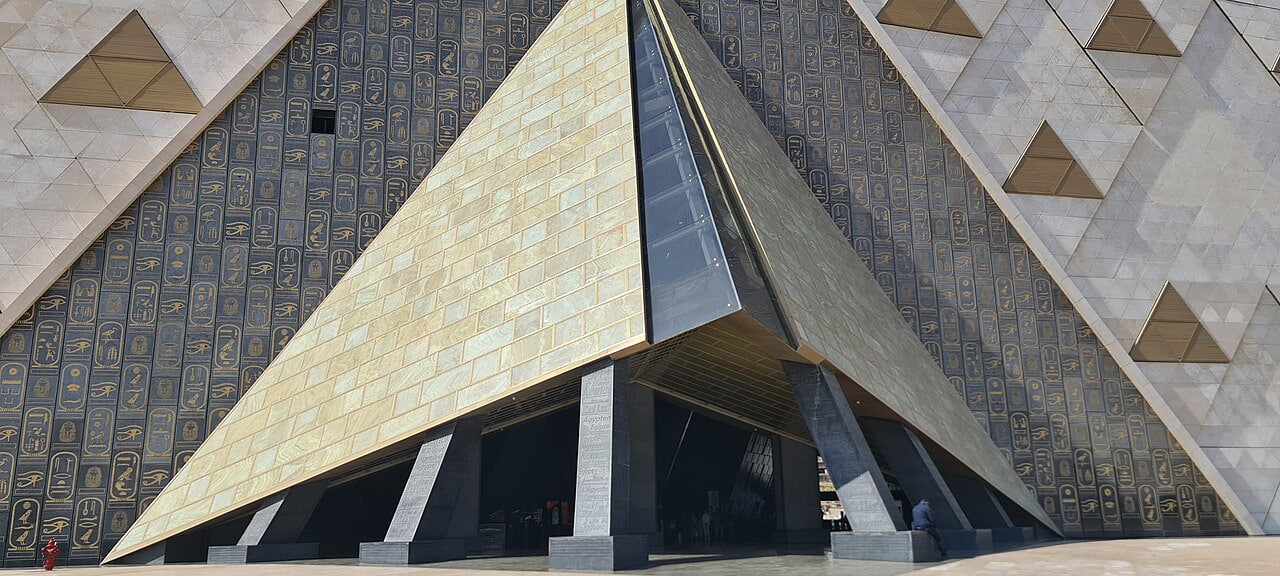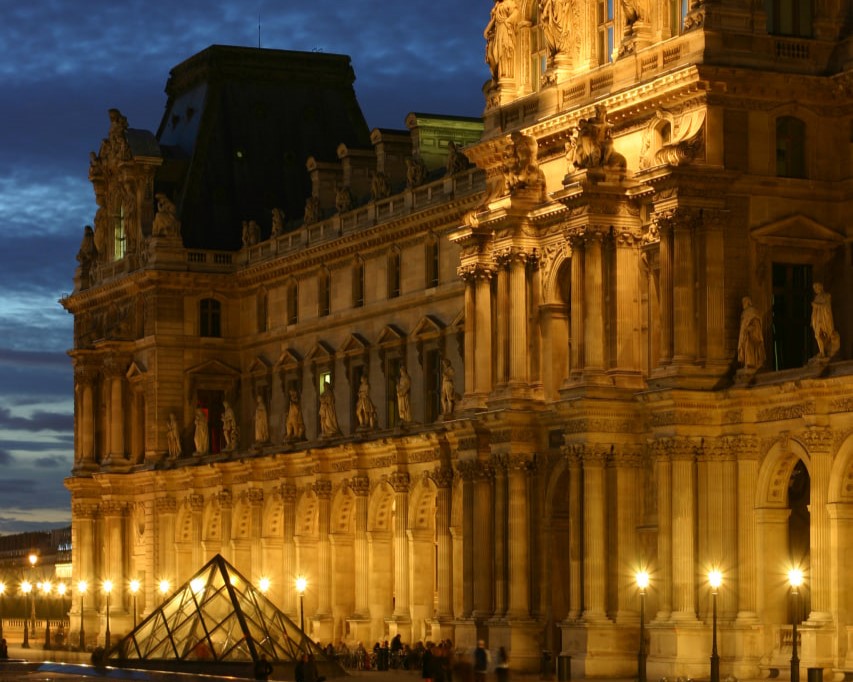Seven Millennia of Heritage Reborn for the World
After more than two decades of anticipation, the Grand Egyptian Museum (GEM) officially opened its doors on November 1, 2025, at the edge of the Giza Plateau — a landmark event widely hailed as “the most significant cultural opening of the 21st century in the Middle East.”
Covering nearly half a million square meters, the GEM is now the largest museum in the world dedicated to a single civilization.
A Dream Decades in the Making
The idea for the museum was first conceived in the 1990s, and construction formally began in 2005 following an international architectural competition won by the Irish firm Heneghan Peng Architects.

Political upheavals, the global pandemic, and economic crises repeatedly delayed completion, but with financial support from the Japan International Cooperation Agency (JICA) and total funding of roughly $1.5 billion, the vision has finally come to life.
As The Guardian and Le Monde note, the GEM has become a symbol of Egypt’s cultural resilience after twenty years of construction. From November 4 onward, the museum opens its galleries to the public.
Tutankhamun’s Treasures: The Pharaoh Returns Home
At the heart of the museum lies an unprecedented display: 5,400 artifacts from the tomb of Tutankhamun, the boy-king whose burial chamber was discovered in 1922.
For the first time, the complete collection — including the iconic gold death mask, nested coffins, chariots, weapons, garments, and ritual items — is presented together in a single space.
Occupying over 7,500 square meters, the Tutankhamun Gallery is, according to National Geographic, “the beating heart of the museum.”
Beyond the Boy King
Yet the GEM’s grandeur extends far beyond one pharaoh. More than 100,000 artifacts narrate seven thousand years of Egyptian history — from the prehistoric dynasties to the Greco-Roman era — arranged in a chronological flow that invites visitors to travel through time.
Among the highlights are the Solar Boat of Khufu, dating back 4,600 years, the collection of Queen Hetepheres, and the monumental statue of Ramses II, weighing over 83 tons, now standing in the museum’s grand atrium.
Bridging Past and Future
According to renowned Egyptologist Zahi Hawass, a leading voice behind the project, the GEM is more than a museum:
“It is the reclaiming of our own narrative. It’s time Egyptians became the scientists of their own heritage.”
The museum includes one of the most advanced conservation and research laboratories in the Middle East, positioning Egypt at the forefront of archaeological science. Hawass emphasizes that “only 30 percent of Egypt’s antiquities have been discovered — seventy percent still lie beneath the sands.”
Reviving the City and Its People
In preparation for the opening, Egypt’s Ministry of Local Development invested more than 519 million Egyptian pounds in roads, landscaping, and infrastructure around the museum, transforming the visitor experience from the moment of arrival.
However, discussions remain about accessibility: local ticket prices, roughly $4, may still be high for some Egyptian families, and cultural advocates have called for broader community inclusion.
A Showcase of Soft Power
The inauguration ceremony gathered world leaders, royalty, and international cultural figures. The evening featured light projections, orchestral music, and a cinematic narrative of Egypt’s timeless legacy.
Prime Minister Mostafa Madbouly described the museum as “Egypt’s gift to the world” — a symbol of cultural rebirth and national pride.
The government aims to increase tourism by 20% and attract over eight million visitors annually, strengthening Egypt’s economy through heritage and culture.
A Monument for the Ages
The Grand Egyptian Museum is not merely a repository of the past — it is a vision for the future. Standing beside the eternal pyramids of Giza, the GEM embodies the meeting of ancient wisdom and modern aspiration.
For the world, its opening marks an invitation to rediscover a civilization that, even after millennia, continues to astonish with its mystery and radiance.
Sources:
The Guardian (31 Oct 2025)
Le Monde (31 Oct 2025)
National Geographic (1 Nov 2025)
France 24 (1 Nov 2025)
Daily News Egypt (1 Nov 2025)
DW (1 Nov 2025)





